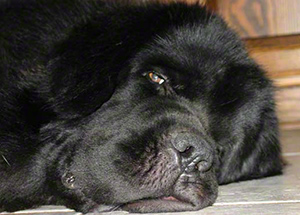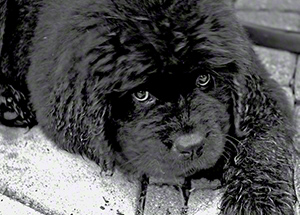The arrival of a new puppy is an exciting event, and the inevitable change in household routine will go much smoother if you’re well-prepared for the arrival of your Newfoundland newcomer. The following items and discussions should help you to get ready – or, if your puppy is already at home, to make sure you’ve covered all the bases. (If you’re not new to dog ownership, some of what’s discussed below will be familiar, but please read through the list anyway, as many of its suggestions are Newf specific. Newfoundlands’ size and breed characteristics mea n that what works for a Lab or a boxer won’t necessarily fill the bill now, or at least not when your new member of the family is full-grown.)
COLLARS and LEASHES
This is largely a matter of personal preference, but be aware that a collar that fits your 4-month-old Newf will quickly be outgrown. Adjustable collars are a reasonable choice at first, though strong pullers will soon require something more substantial since most adjustable collars have plastic buckles and couplings. There are various styles of training collars (prong or pinch collars, “choke chain” collars, martingales, etc.), but if you aren’t familiar with their correct use, consult your vet or a local dog training professional before purchasing and using one of these, and never leave one on a dog when not in actual use. You may also want to look into harnesses or head halters, which can work very well for walking some dogs, though their use as training tools is quite limited. Of course for many dogs a simple flat buckle collar is all you’ll need.
While the leash displays at your local pet store may imply that nylon leashes are the way to go, most experienced dog owners prefer leather for routine use, for it is much easier on your hands when your dog pulls or makes an unexpected stop. When you take your puppy around water, however, nylon leashes are a better choice than leather, and leashes made of floatable material (usually polypropylene) are better still Four or six foot leashes (or “leads,” as many dog fanciers say) are the most common lengths. Retractable leashes (often referred to as “Flexi” leads) may be acceptable for some dogs in certain situations, but should not be used until your dog is older and has made good training progress. An excited lunge from an exuberant Newf, especially if he’s been able to get up a head of steam on a long lead, can snap a Flexi or, more likely, pull the person holding it to the ground.

